Keith Lusher 03.19.24
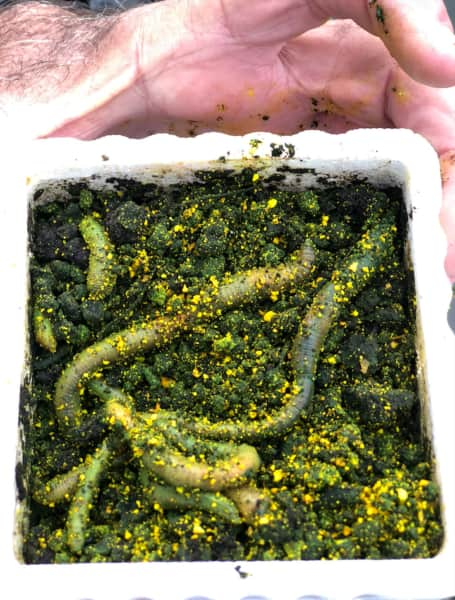
When it comes to ingenuity, Sportsman’s Paradise may just have the highest concentration per capita in the Nation. It’s that same ingenuity that gave us inventions like the pirogue, blackened redfish, and cajun anchor. All of these ideas started with a basic model but through years of improvement were improved with the simple sentiment – “I can make that better.”
Take for instance, fishing worms. Anglers have been using worms for bait since before gumbo was invented. One reason for this is the ease at which worms can be found. It’s as easy as digging a hole in the ground.
I recently made a fishing trip with someone who has been catching bream with worms since he was a kid. Ray Miller of Madisonville, LA, has found a way to improve a classic bait that so many of us have grown up using. “I’ve been making green worms for a few years now. Before discovering them, I used live crickets, howver, these green worms are so good I don’t think I’ve bought a cricket in over six years,” Miller says. It turns out that the 73-year-old south Louisiana cajun has figured out a way to add a jolt of color to what was thought of as unimprovable bait. Miller starts with a small batch of night crawlers. He adds a teaspoon of a nutrient called Worm-Glo into the soil. It’s a non-toxic food that the worms take in and ingest. “I add a tablespoon of this stuff into the box of worms four days before I go fishing. Then when it’s time to go fishing they are a bright florescent green,” Miller says.
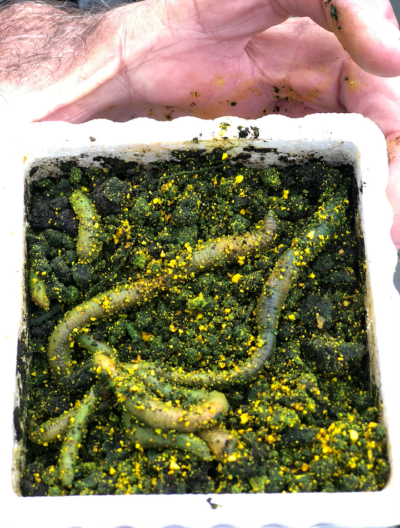
Admittedly I was a bit skeptical at first, but as we arrived at our first spot, I opened the container of worms and I was surprised at how bright the green worms were.
Miller pinches a one-inch piece of worm and puts it on a #6 cricket hook. “It’s important not to put a big section of the worm on the hook because these bream will rip it right off the hook,” he said.
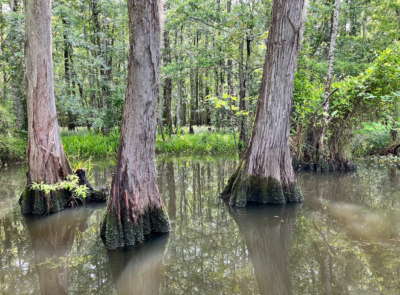
Our first stop was a dead-end canal just off the Tchefuncte River in Madisonville, LA. The lily pads and duckweed were thick on the surface as we approached, but Miller powered through the vegetation with the trolling motor. At the end of the waterway was a stretch of still, shaded water with overhanging cypress branches. We made a few casts and the action came quickly. I looked over and saw Ray lunging over getting ready to set the hook. His pencil cork twitched to the left and Miller set the hook. He reeled in a 5-inch bluegill. “We’ll throw this one back and wait on the Chinquapin to bite,” Miller said. While most people lump Chinquapin into the same category as bluegill, Miller says there’s a big difference when it comes to size. “Those Chinquapin are considerably thicker than regular bluegill so there’s a lot more meat on them when you clean them,” he says.
After catching a few more bluegill, we made a move to try and find some Chinquapin in the main river. It didn’t take long to find what we were looking for. It was a stretch of shoreline in the main river. The water was only two feet deep, but it was a large area that went untouched by most fishermen. “When you see those cypress trees along the bank, if you get closer you’ll notice that in some places there is another 30 feet of water before you get to the actual shoreline,” Miller said. This shallow stretch of water is where we caught most of our fish on this day. Most of our fish came from casting next to the cypress tree stumps as the majority of our fish came off of wood.
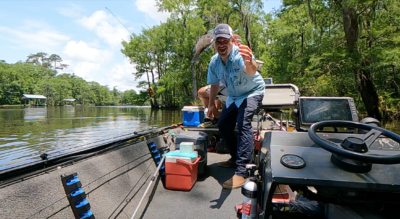
While using green worms was a first for me, fishing with something called a pencil cork was also new. A pencil cork is a cork with long slender pencil-like extensions shooting out of the top and bottom of the float. The benefit of using this kind of cork is that the float reacts to the smallest tap on the hook. “Normally you wait for the cork to shoot under but with these pencil corks all you have to do is watch for the slightest movement then set the hook!” Miller said. We set the hook and a mess of Chinquapin this day and brought back plenty of meat to fillet.
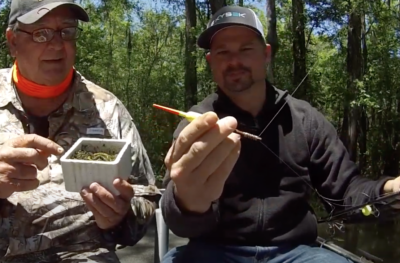
Miller recommends trying the Worm-Glo on your next trip and you’ll notice the difference. “These things really work! When I take my wife fishing she won’t go unless we’re using green worms!” says Miller.

Miller stressed that the worms are meant for fishing and to be careful when putting them in your refrigerator. “I have a dedicated drawer in my refrigerator so I advise keeping them in a separate drawer! My wife let me know real quick that I was not to put them with her food!” He said.

